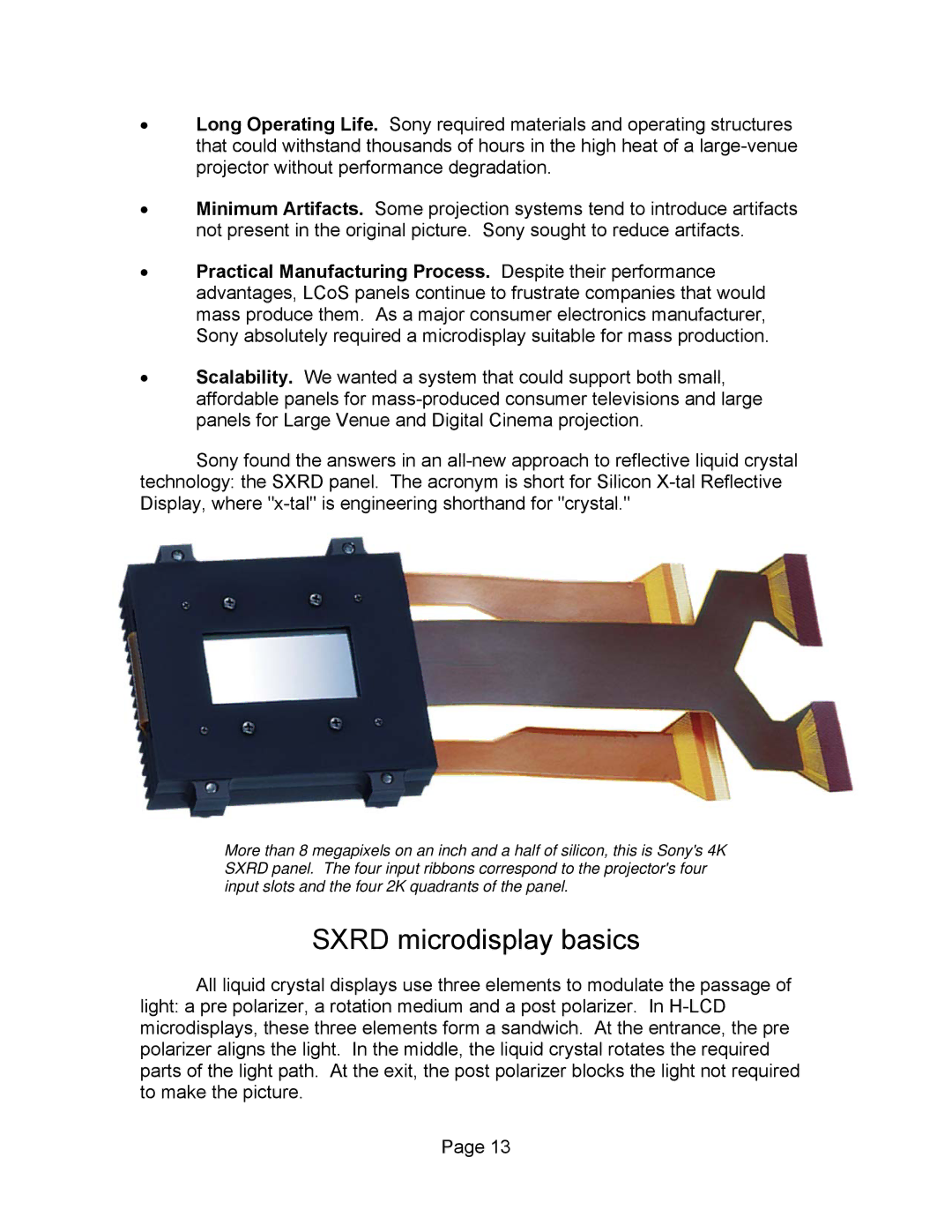
•Long Operating Life. Sony required materials and operating structures that could withstand thousands of hours in the high heat of a
•Minimum Artifacts. Some projection systems tend to introduce artifacts not present in the original picture. Sony sought to reduce artifacts.
•Practical Manufacturing Process. Despite their performance advantages, LCoS panels continue to frustrate companies that would mass produce them. As a major consumer electronics manufacturer, Sony absolutely required a microdisplay suitable for mass production.
•Scalability. We wanted a system that could support both small, affordable panels for
Sony found the answers in an
More than 8 megapixels on an inch and a half of silicon, this is Sony's 4K SXRD panel. The four input ribbons correspond to the projector's four input slots and the four 2K quadrants of the panel.
SXRD microdisplay basics
All liquid crystal displays use three elements to modulate the passage of light: a pre polarizer, a rotation medium and a post polarizer. In
Page 13
